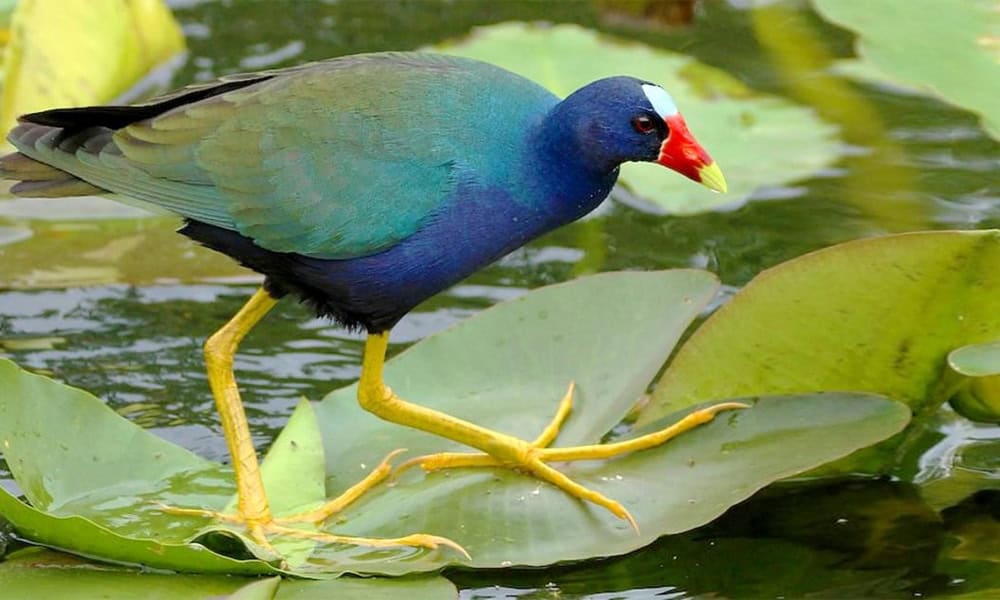Quick! Think of a purple bird! It’s a little difficult, right? I searched my brain and came up with a purple martin. A small bird in the swallow family. But that’s not a satisfying answer because it’s only kind of purple. It’s one of those shiny blackish birds that appear blue or purple if the sun hits it just right. If your brain struggles to produce a quintessential purple bird like mine does, I have good news. We can all think of the purple gallinule from now on.
The purple gallinule (Porphyrio martinicus) has a few names in Spanish including gallareta morada, calamón morada, and gallina de agua, which is my favorite because I like the sound of ‘water chicken.’ This bird is so pretty many of my bird books start out the description as ‘instantly recognizable.’ Much of the body is bright purple, not if you look at it in the right light purple, but real purple. The wings are sort of olive green, and the head is quite beautiful with a pale-blue shield on the front of the face and a beak that starts out red and turns yellow.
Purple gallinules are water birds in the family that include crakes and rails. These birds are built for the water like herons with proportional long legs, but they’re much smaller than herons with little, plump bodies. They have oversized feet with super long toes that allow them to distribute their weight evenly and walk on floating vegetation. They have the ability to fly but they seem to be both not very interested in doing it and not that skilled at it. When I approach them in their habitat, they tend to want to run away from me, but they will fly away in a low-to-the-ground, ungraceful manner if pushed.
They can be found in suitable habitat throughout Costa Rica. They prefer swampy areas, ponds, and flooded pastures. They like slow moving or still water with tall grass on the margins and lots of floating vegetation. Their diet is varied. They eat fruits, seeds, aquatic insects, grains, frogs, and small fish. I was surprised to learn that they also eat the eggs and juveniles of the northern jacana. I think it threw me off because they seem like very similar species and the purple gallinule doesn’t seem sufficiently large enough to prey on jacanas, but it’s definitely a thing.
During breeding season, the male and female perform a courtship dance. A nest is made alongside the water’s edge or on floating vegetation. The female lays between three and ten eggs, and the pair defend the area around the nest. The juveniles will hang out with the male and female and help parent the next batch of hatchlings.
Even though they are found throughout Costa Rica’s swampy areas, I find them to be generally uncommon compared to similar species that share their environment like northern jacanas and black-necked stilts. I can remember the first time I saw one in the marshy area of Hacienda El Viejo National Wildlife Refuge. It was during my very first wildlife monitoring contract and the colorful little bird stopped me in my tracks. I attempted to capture one with my camera traps but I came up empty. In the following years I was able to record a few videos but I’m still hungry for more. Take a look at a few of my best clips in the video below.
About the Author
Vincent Losasso, founder of Guanacaste Wildlife Monitoring, is a biologist who works with camera traps throughout Costa Rica






